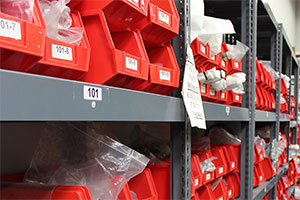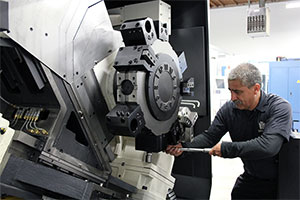The Secret to Automating CNC Machine Tools
By Derek Goodwin, Trinity Automation, A Division of Selway Machine Tool

|
At this year’s IMTS everybody was talking about the need for automation. Why then are only 26% of America’s top machine shops currently invested according to Modern Machine Shop’s 2017 Top Shop Report. Most machine tool manufacturers had automation systems on display for things like loading workpieces and pallets as well as additional cutting tools. If machine tool manufacturers are onboard, what is stopping the other 74% of Top Shops from investing in automating workholding and material handling? The Crux of the matter is…shop owners need to be sufficiently confident in their processes to consider allowing a robot to load components for unmanned machining. After all, automation is not about workforce reduction, it's about increasing productivity per employee and improving employee quality of life by having robots perform difficult, dirty, dangerous and repetitive tasks. It’s just the right thing to do. So how do shop owners gain confidence? The answer already exists with their CNC machines. Create a Stable Process, Then Automate To create a stable process, you must have a proven CNC program, correct workholding methods and the right cutting tools. Once the process is proven, it must be verified on an ongoing basis with an ‘in process’ inspection plan created for the machine operator to check critical dimensions. So, if all these inspection processes require skilled human intervention, then how can we effectively automate to allow a machining center to run untended? Dimensional Stability is a Must Variables affecting dimensional stability include tool wear and breakage. However, modern CNC machines can check tools using probes or lasers. You can also use tool life management in your CNC control to define the number of components that a cutting tool makes before replacement is required. The trick is to have an automation system that can receive this information from the CNC machine and make intelligent decisions based on predefined macros. When tool breakage is detected the pallet can be tagged and removed, replacing the pallet with the next one in the priority list not using that tool. This way the system continues to operate automatically, even when production problems unfold. Are You Using Your Probing System? Another opportunity for efficient automation lies with the probing system on your CNC machine. Probing can be utilized to check part orientation when each new pallet is loaded. Work offset adjustments can be made automatically, ensuring correct alignment and orientation. This provides dynamic process control by checking critical dimensions, inspecting parts and re-cutting based on the results. Conclusion When you are ready, automation will have a positive impact not only your bottom line but also your employee’s well-being. The secret is to create a stable process and to utilize the verification functionality already in your CNC machine tool. Now you are ready to automate your work holding and material handling and progress to increased productivity and lights-out production. |




